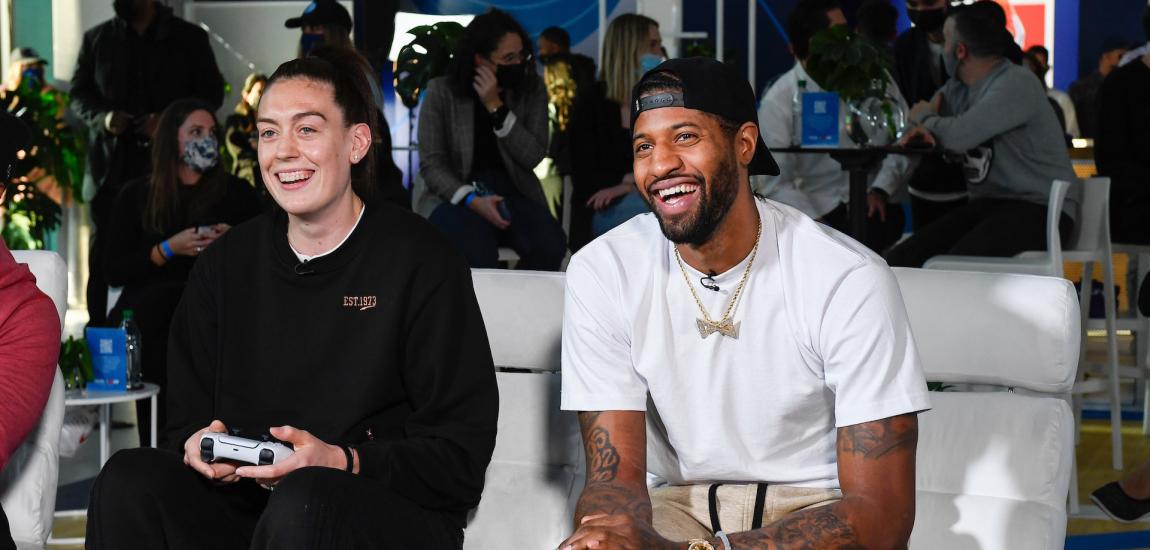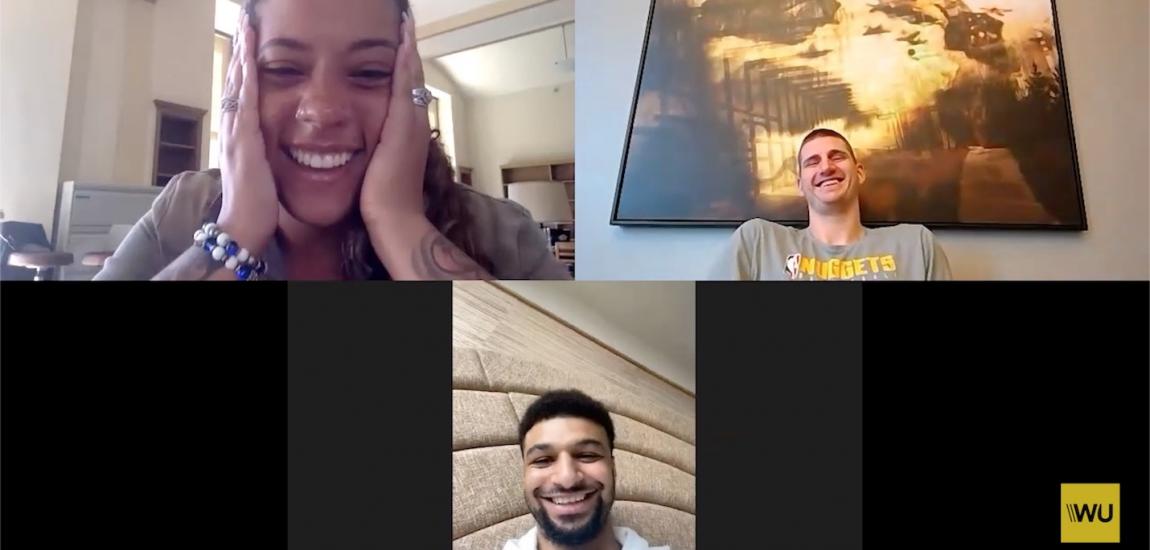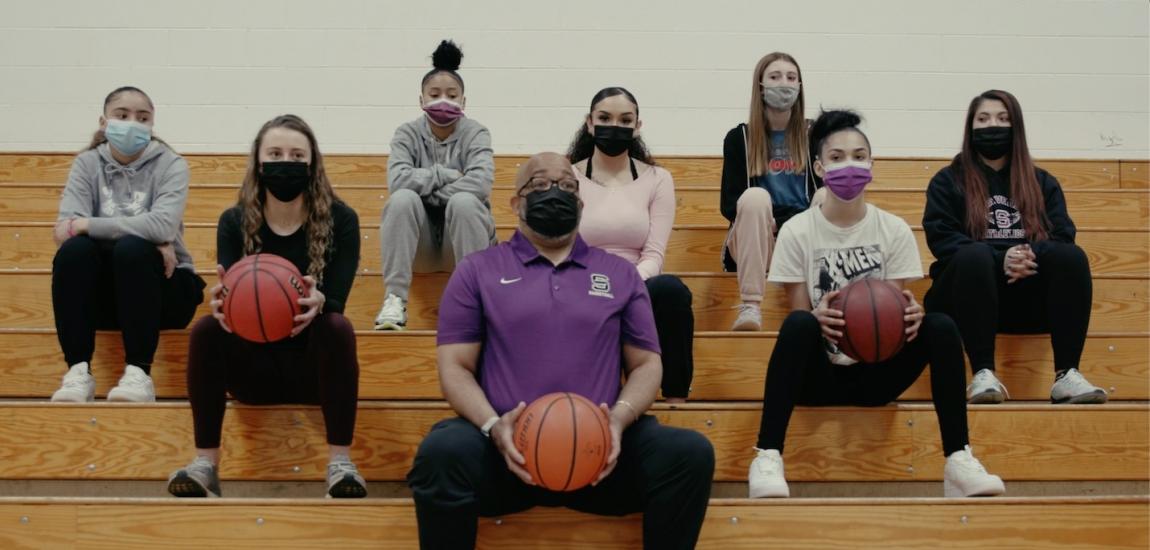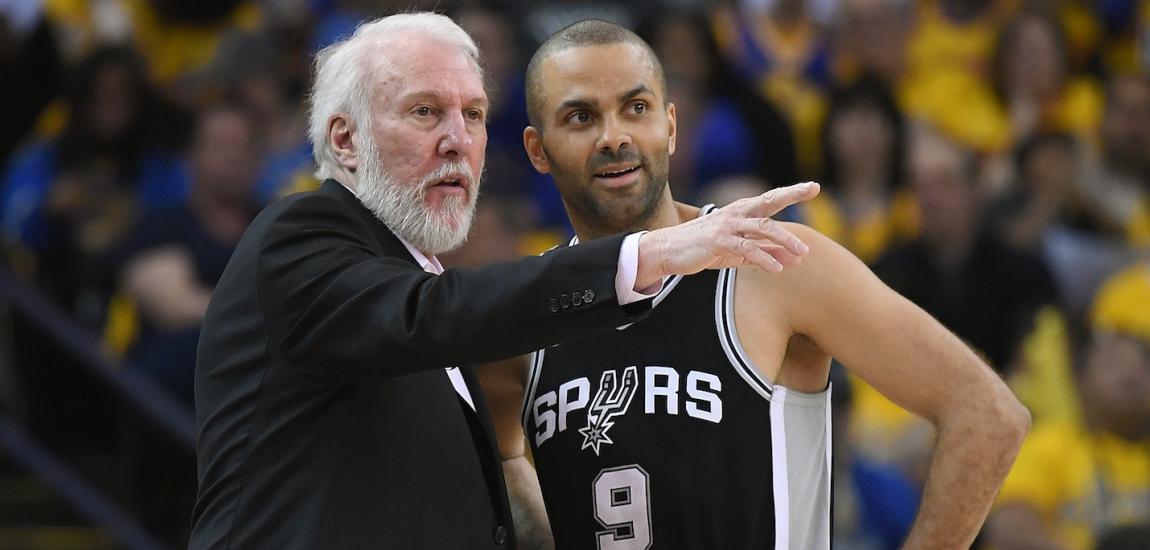

Madison Square Garden was silent. The crowd fixed its eyes upon the far tunnel by Woody Allen. Out walked three men in suits. Then the arena went nuts.
The date was Nov. 22, 2008. The Knicks were leading the Washington Wizards early in the first quarter. But it wasn't the game the fans were cheering about. It was the three men: Al Harrington, Tim Thomas and Cuttino Mobley.
One day earlier, the new president, Donnie Walsh, made a pair of trades for the trio, discarding the hefty contracts of Jamal Crawford and Zach Randolph. Harrington played 140 games in orange and blue, Thomas 36 and Mobley zero.
But the fans cheered the new acquisitions that day. They believed the Knicks had just signed LeBron James. Or Dwyane Wade. Or Chris Bosh, Amar’e Stoudemire or Joe Johnson. Or two of them.
That's what we all thought. The Knicks now had the cap space to make a splash in the much anticipated 2010 off-season. The next two seasons were ruined, but no one seemed to care. The misery of Isiah Thomas, Larry Brown and Stephon Marbury seemed to be ending. The 2010-11 season was beginning two years before it would start.
I was at the Garden that night. And when I walked out, I fantasized the same way everyone else did. I imagined Wade and James cruising down 7th Avenue en route to another victory at MSG. I imagined New York City becoming the center of basketball for the first time since Walt Frazier, Willis Reed and Earl Monroe ruled the town in the early 70s.
Maybe I was dreaming a little too much. But for those of you who do not remember, the fall of 2008 was not the brightest time for New York sports fans. The Yankees missed the playoffs for the first time in 14 years and the Mets collapsed in the final month for the second consecutive season. Plaxico Burress shot himself in the leg and the Brett Favre experiment failed. Jaromir Jagr left Broadway for the Kontinental Hockey League in Russia.
So when the Knicks made a bright move, it looked really bright. We all circled July 1, 2010 on our calendars and prepared for the city's greatest day since June 18, 1985, Patrick Ewing's draft day.
When the 2010 off-season finally began, the Knicks could not have put themselves in better position to make a splash. Only five players -- Danilo Gallinari, Wilson Chandler, Toney Douglas, Bill Walker and Eddy Curry -- were still under contract. The Knicks had the cap space to do something crazy, something to change the NBA.
Then on July 5, we thought it started. Amar'e Stoudemire signed. "The Knicks are back," he said. One down. New York had its first basketball superstar since Ewing. And bait for LeBron James.
James announced that his "Decision" would be July 9. The Knicks had four days to convince him to play with Amar'e. On July 8, ESPN Radio's Bill Daughtry reported that a caravan of vehicles containing James' entourage was heading for the East Coast. He also claimed that James coming to New York was a "done deal." The city went bonkers. And not for Cuttino Mobley.

James' vehicles were headed east all right. To the Greenwich Boys and Girls Club for his announcement. Why he announced his plans to go to Miami while only 30 miles from MSG will never be known. But New Yorkers felt stabbed in the back. We saw him laughing with Spike Lee and wearing a Yankee hat for the past two years. We really thought he was coming. He made us think he was coming. And then ... he didn’t.
So life went on in Walsh's MSG office. Within hours of James' "Decision," Walsh let David Lee, a 2009-10 All-Star, head to Golden State for three role players: Ronny Turiaf, a one-dimensional shot blocker; Anthony Randolph, an athletic forward who left college too early, and Kelenna Azubuike, an injured defensive specialist who may never see an NBA court again. We were sad to see our beloved Lee go, especially in return for what seemed like nothing.
Then Walsh made an interesting move. On July 11, he signed Raymond Felton to a two-year deal (giving Walsh the option to sign Chris Paul or Deron Williams in the 2012 off-season). We remembered Felton leading UNC to an NCAA title, but his NBA career had been quiet. What had he been doing for the past five years in Charlotte? One thing was for certain, though: Felton would be a whole lot better in Mike D’Antoni's up-tempo system than Chris Duhon.
As the season neared, ESPN The Magazine placed the Knicks at No. 7 in its Eastern Conference rankings. Sports Illustrated put them at No. 11. Our optimism of the past two years shriveled. "Stoudemire has to be your No. 2 or No. 3 in order for your team to be successful. If he's your No. 1, then I don't think you're going to make the playoffs," a rival scout wrote in SI.
In the final days before the 2010-11 season's official start, billboards and commercials tried to pump the city up, but we didn’t know what to expect. Our best player, Stoudemire, had never played without a Hall of Fame point guard and our point guard, Felton, was coming off a measely 5.6 APG season. Our best two returning players, Danilo Gallinari and Wilson Chandler, could average 15 PPG shooting from the outside, but their defense was mediocre to poor. Our bench was a conglomerate of inexperienced and elderly players with minimal playoff experience. After all us Knicks fans had been through, it looked like the Chosen Season, without the Chosen One, was going to be bust.
The Knicks won on opening night, then lost two. Then won two. Toney Douglas dropped 30 on the road in Chicago. Six players scored in double figures against the Wizards. Things were looking good.
Then they lost six in a row. We groaned. We thought we were witnessing another season in the NBA's doghouse. A 3-8 hole and a team that could play absolutely no defense. Some of us wanted Mike D’Antoni out. If we could, we would have sent Timofey Mozgov to Siberia.
And then the we won 13 of 14. Stoudemire became the MVP front-runner. He ate, slept, and scored 30 points per game. And for the first time, played defense. As did all the Knicks. Turiaf led a block party extravaganza and even Chandler and Gallinari chipped in. Douglas and Felton became the two most dangerous backcourt thieves in the league. Shawne Williams and Bill Walker sniped from beyond the arc.
We loved Raymond Felton. And he loved us. Felton found a home in NYC. He scored in the twenties and assisted in the teens night after night. D'Antoni let him run free, taking outlet passes up and down the court, dozens of possessions per game. For the first two months of the season, the point guard power rankings in the East went Derrick Rose, Rajon Rondo, Raymond Felton.
Another guy we came to know was Landry Fields. During the summer, while on our LeBron Witch Hunt, we vaguely remembered drafting the lanky, defensive shooting guard from Stanford. He seemed like an intelligent, hard-working guy who could probably overstay his NBA welcome as a mid-second round pick. He did a hell of a lot more, starting every game in the first months of the season at shooting guard, while defending the likes of Dwyane Wade, Ray Allen and Manu Ginobli.
Then the Knicks hit a bit of a rough patch in January and early February. Not really rough, though. Just average. The team hovered 4-8 games above .500 for those 40 days. But the fan base panicked. The 76ers were inching closer and closer to our No. 6 spot in the East, and the Garden faithful, experiencing a playoff team for the first time in seven years, was willing to do anything to stop them. And when an NYC-born superstar wanted to come, we jumped on his bandwagon.
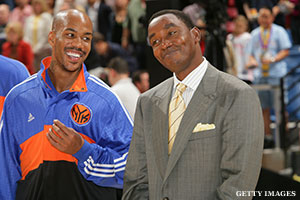
This was shown best on the night of Feb. 9, during a breakdown against the Clippers. We watched Randy Foye light up the defense for 17 fourth quarter points, propelling LA's B-team to a 10-point victory. I sat in section 415, way up in the Garden’s rafters, when I heard the chants. "We want Melo," the crowd thundered. The arena shook. Chandler mishandled a pass. Felton lost his dribble. Amid trade rumors, the team lost its focus and the fans' support was ambiguous. We aren't actually the sweetest fans in the world and we didn’t know how to root for a bunch of players that we were hoping would leave town.
Chandler, Gallinari, Felton and Mozgov won two of their final three games on Broadway. Then, on Feb. 22, they were gone, and Carmelo Anthony and Chauncey Billups were on their way to town.
I wanted the trade to happen, just like everybody else. But when the trade finally did go down, I got teary-eyed, just like everybody else. The casual NBA fan did not understand the Knicks fan's feelings at this time. We didn’t feel like Chandler and Gallinari were just two players who came through the city. They had been through hell with us. Both men played on terrible Knicks teams that were grueling just to watch. Chandler even sat in the arena with us during the Isiah Thomas years. It killed us to let go of two homegrown boys who had endured the same pain as us and helped us get out of it. Felton was the floor general of the revival. Even with Stoudemire's skill, the Knicks would have been nowhere by the trade deadline without Felton’s ball-handling. It wasn’t easy for us to watch one of the main catalysts of the playoff run go west while having the time of his life in our city. And as for Mozgov, the husky Russian was just starting to show signs of life in the Big Apple when he was sent to Denver.
But I washed away my tears and showed up at the Garden on Feb. 23 (trade deadline tickets are always a bargain). This time, we didn’t cheer for cap space. We bowed down to our second superstar and sniffled out a few tears of joy. It had been 823 days since Harrington, Thomas and Mobley entered the arena. Donnie Walsh had finally accomplished his mission. The Knicks were back.
MSG's tech crew prepared a montage for Anthony, reminding us that our Brooklyn-born, Syracuse-schooled boy had returned to our city. His city. We rejoiced.
Melo held the ball too long, shot too much and played no defense that night. We didn't care. We believed that finally, the Knicks had the tools to start working towards a playoff run for the first time in a decade. Four nights after that win over the Bucks, the Knicks beat the Heat. Heck, we started talking championship right then and there. Two weeks later, Melo hit a game winner in Memphis. Our seven years of misery never seemed so far behind us.
But then, the Knicks hit a funk: Six straight losses in late March and a drop out of the sixth seed for the first time since December. "Melo and Billups can't play in D'Antoni's system," we claimed. "The team has no more depth," we barked. "Carmelo Anthony is the most arrogant player in the league," we hissed. The Nuggets climbed to the top tier of the west. The Knicks' most renowned trade in team history was quickly labeled as a bust.
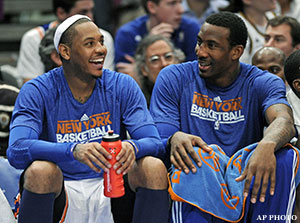
As they had done way back in November, the Knicks rebounded with a winning streak. They won seven in a row to clinch the sixth spot. We took our first deep breath of the season. Our beloved Knicks were back in the playoffs as a team that ESPN analysts described as an "unordinary #6 seed" because of its mid-season acquisitions. The Knicks would have to get by the defending conference champion and rival Celtics to reach the second round. At the time, we wouldn't have wanted it any other way.
The Knicks arrived in Boston after losing all four regular season games to the Celtics, but we believed. On Dec. 15, Paul Pierce needed a last-second fadeaway to put the Knicks away. On March 21, the C's needed to scrape up Anthony's face to escape MSG with a win. Now, when it really mattered, we thought our team would come through.
We all know what happened. The Knicks had Game 1 in the bank. Then in the final minutes, an injury forced Billups out for the game (and series) and Anthony was called for a fluke offensive foul. Ray Allen then nailed a three. In Game 2, without Billups and Stoudemire, Melo went wild for 42 points and a late lead. That was before Kevin Garnett netted a fadeaway and Anthony made the mistake of giving Jared Jeffries the ball on offense. In Game 3, finally at home again in the playoffs, the Knicks flopped hard with a 17-point loss.
Then came the final lunge. In Game 4, down 17 at half time, the season looked lost. But then, with a youthful burst of Anthony Carter and Roger Mason, Jr., the Knicks came back for one last revival. They cut the lead to six early in the fourth quarter. Then the Celtics scored, and scored, and scored again. And then it was over.
I must admit I didn't even stay until the end. With 50 seconds left and a double-digit deficit, I got up with the rest of the so-called Garden "faithful" and hoped to beat traffic. Just like that, the season that had been anticipated for, at the very least, two years, ended. No first home playoff win since 2000. No first playoff win since 2001. Just a sweep.
But it was all an experience. If the rest of this country forgot about us New York basketball fans, we're back. We're relevant for the first time in ten years and this time, we’re here to stay. Donnie Walsh will bring in another household name over the summer before another splash (a.k.a. Chris Paul) comes in 2012. This season was a prelude for what is to come in the next decade from the Garden Faithful. We're going to love our Knicks and make our home court the hardest place in the nation to play. We're going to make players want to come to New York again. And we're going to make one particular man in Miami regret his recent decision.

